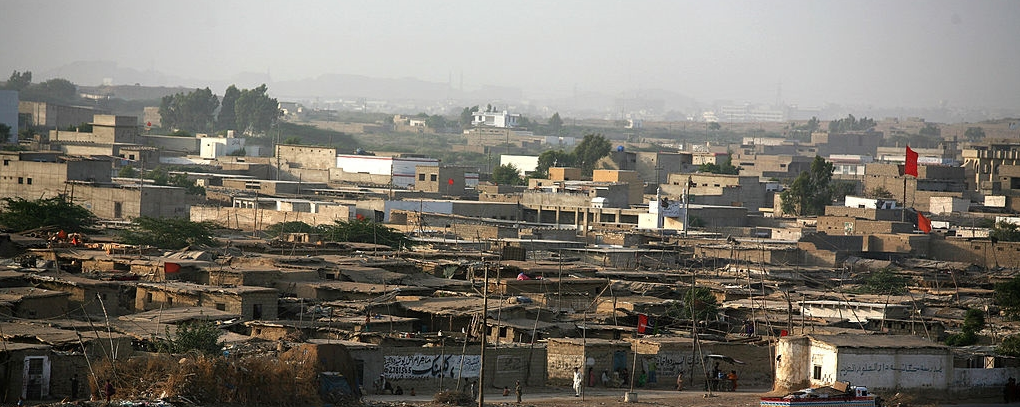
Mass urbanization has become a major global issue in recent years with the population shift from rural to urban areas placing considerable strain on urban infrastructure, such as housing, electrical grids, and public transportation. There are few places that reflect these issues better than Pakistan, the most rapidly urbanizing country in South Asia. This trend of population shifts outpacing the resources of urban communities has paved the way for what a 2012 World Bank report identifies as “messy and hidden” urbanization, or the existence of millions of people who live in slums without access to basic services. These hidden areas have allowed safe havens to come up for crime, gang violence, and even terrorist groups.
Pakistan’s urban population, 38.8 percent of its total population in 2015, is currently growing at an annual rate of 2.81 percent. At this level of growth, half of Pakistan’s population will reside in cities by 2025. Although Pakistan’s cities generate up to 78 percent of the country’s total GDP, they struggle to provide basic educational, energy, and health services to their populations, most of which are from lower income categories. About 80 percent of urban households in Pakistan earn 26,000 Pakistani rupees per month or less (roughly $250 USD), and about 60 percent make less than 21,000 Pakistani rupees per month (roughly $200 USD).
By 2025, the population of Karachi, Pakistan’s largest city, will expand from 13 million to 19 million; for its part, Lahore will expand from 7 million to more than 10 million in the same time period. This population shift is primarily driven by the search for better education and health facilities, natural population growth, and most notably, migration from conflict zones. To be clear, migration from conflict zones is not a new phenomenon in Pakistan’s history; after Partition, mass migration from India was a starting point of urbanization. However, recent external and internal conflicts have precipitated a large influx of migrants to Pakistan’s cities, such as the on-going instability in Afghanistan and Pakistan’s campaigns against militant groups in its tribal areas.
Regrettably, this largely unregulated migration in already overwhelmed cities has created space for criminal and extremist organizations. For example, as of 2012, it was estimated that 7,000-8,000 members of the Afghan Taliban resided in Karachi. Minority communities in Peshawar and Quetta have suffered from numerous acts of violence committed by extremist organizations moving base to those cities. Cities already under stress are unable to take on the added economic pressure of the migrant population, creating further space for radicalization. Even outside of extremist organizations, migration combined with scarcity of resources has created space for instability and crime in Karachi, and it is estimated that thousands of businesses in Karachi have fled because of rampant extortion rackets. Thus, it seems that Pakistan’s ratio of one police officer for every 304 persons is not sufficient to deal with this degree of violence. Furthermore, a report from security expert Hassan Abbas notes that Pakistan’s law-enforcement capabilities suffer from a lack of “modern investigative tools, requisite skills, and incentives,” which contributes to instability within these urban spaces.
Although urbanization can provide both important macroeconomic growth and improvements in the standards of living for the average resident, unplanned and un-managed urbanization can have negative consequences, as Pakistan’s situation indicates. Some policy recommendations to address these issues associated with mass urbanization include:
1. Holding a census immediately: Not having had a census since 1998, Pakistan needs a new census to gain a better understanding of how its urban population has changed in almost two decades and to understand the degree to which cities have failed to expand services to meet this growing population.
2. Defining new urban centers and other administrative boundaries: The creation of these constructs from updated census information would allow Pakistan to absorb unaccounted settlements and structure how it would expand the coverage of governance, security, and services to a larger population.
3. Introducing police reforms: The most important change required is to update the number and quality of police officers to meet the needs of urban areas suffering from high levels of crime. This calls for introducing improved training, investigative methods, and incentives for police officers to both counter existing criminal and extremist elements and bolster anti-corruption efforts.
***
Image: Bloomberg, Getty


